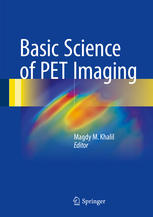

Most ebook files are in PDF format, so you can easily read them using various software such as Foxit Reader or directly on the Google Chrome browser.
Some ebook files are released by publishers in other formats such as .awz, .mobi, .epub, .fb2, etc. You may need to install specific software to read these formats on mobile/PC, such as Calibre.
Please read the tutorial at this link: https://ebookbell.com/faq
We offer FREE conversion to the popular formats you request; however, this may take some time. Therefore, right after payment, please email us, and we will try to provide the service as quickly as possible.
For some exceptional file formats or broken links (if any), please refrain from opening any disputes. Instead, email us first, and we will try to assist within a maximum of 6 hours.
EbookBell Team

4.3
88 reviewsThis book offers a wide-ranging and up-to-date overview of the basic science underlying PET and
its preclinical and clinical applications in modern medicine. In addition, it provides the reader with a sound understanding of the scientific principles and use of PET in routine practice and biomedical imaging research. The opening sections address the fundamental physics, radiation safety, CT scanning dosimetry, and dosimetry of PET radiotracers, chemistry and regulation of PET radiopharmaceuticals, with information on labeling strategies, tracer quality control, and regulation of radiopharmaceutical production in Europe and the United States. PET physics and instrumentation are then discussed, covering the basic principles of PET and PET scanning systems, hybrid PET/CT and PET/MR imaging, system calibration, acceptance testing, and quality control. Subsequent sections focus on image reconstruction, processing, and quantitation in PET and hybrid PET and on imaging artifacts and correction techniques, with particular attention to partial volume correction and motion artifacts.The book closes by examining clinical applications of PET and hybrid PET and their physiological and/or molecular basis in conjunction with technical foundations in the disciplines of oncology, cardiology and neurology, PET in pediatric malignancy and its role in radiotherapy treatment planning. Basic Science of PET Imaging will meet the needs of nuclear medicine practitioners, other radiology specialists, and trainees in these fields.